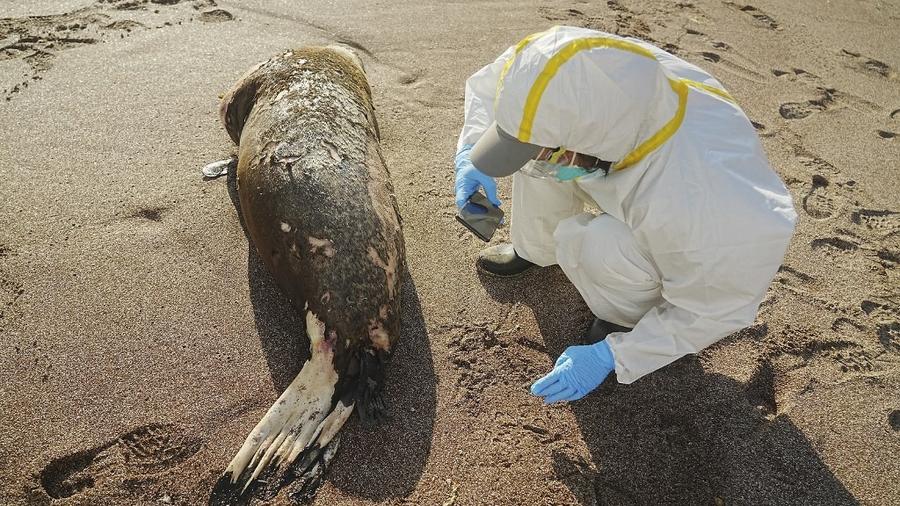 Scientists inspect a dead sea lion at the Paracas National Reserve in the Ica region, Peru on Jan 25, 2023. (PHOTO / AFP)
Scientists inspect a dead sea lion at the Paracas National Reserve in the Ica region, Peru on Jan 25, 2023. (PHOTO / AFP)
Bird flu has killed tens of thousands of birds, mostly pelicans, and at least 716 sea lions in protected areas across Peru, the authorities said, as the H5N1 strain spreads throughout the region.
Peru recorded its first case of the virus in November in birds in the north of the country. Since then it has killed 63,000 birds, according to government data.
The population of sea lions numbered about 110,000 in Peru in 2020, mainly in the coastal region of Ica and the Paracas nature reserve
"We have also recorded since mid-January the unusual death of many sea lions, so far we have about 716 dead sea lions in seven protected natural areas of the coast," said Roberto Gutierrez, head of surveillance of the National Service of Natural Protected Areas.
READ MORE: Japan culls nearly 10m birds as avian flu rages
Since the beginning of 2021, bird flu has ravaged the world, killing more than 200 million birds due to disease or mass culling, the World Organization for Animal Health has said.
In South America, bird flu cases have been detected in Ecuador, Bolivia, Chile, Paraguay and recently in Argentina and Uruguay. In Brazil, the world's largest poultry exporter, there are still no confirmed cases.
In Chile, health authorities last week detected the first positive case in marine mammal, a sea lion on a beach in the north of the country.
The population of sea lions numbered about 110,000 in Peru in 2020, mainly in the coastal region of Ica and the Paracas nature reserve, according to Oceana, an international organization dedicated to protecting oceans.
READ MORE: Bird flu spreads in Czech Republic's largest outbreak
In recent weeks, crews from Peru's National Forestry and Wildlife Service, in protective plastic suits, gloves and masks, have collected and buried hundreds of sea lions from several beaches along Peru's central coast.
"What we remember initially started with pelicans last year is now affecting these marine mammals," Javier Jara, a veterinarian with the service, said.


